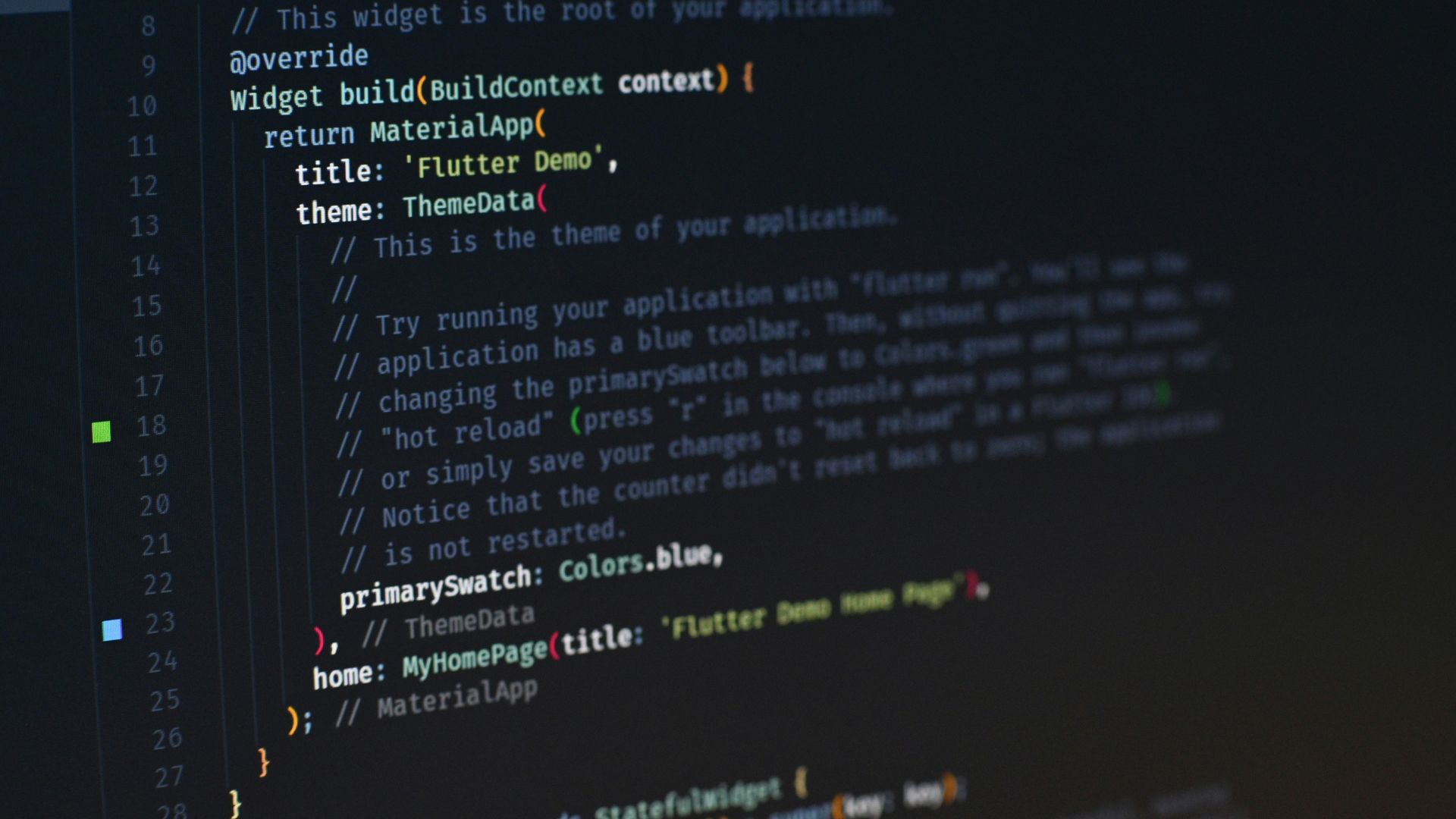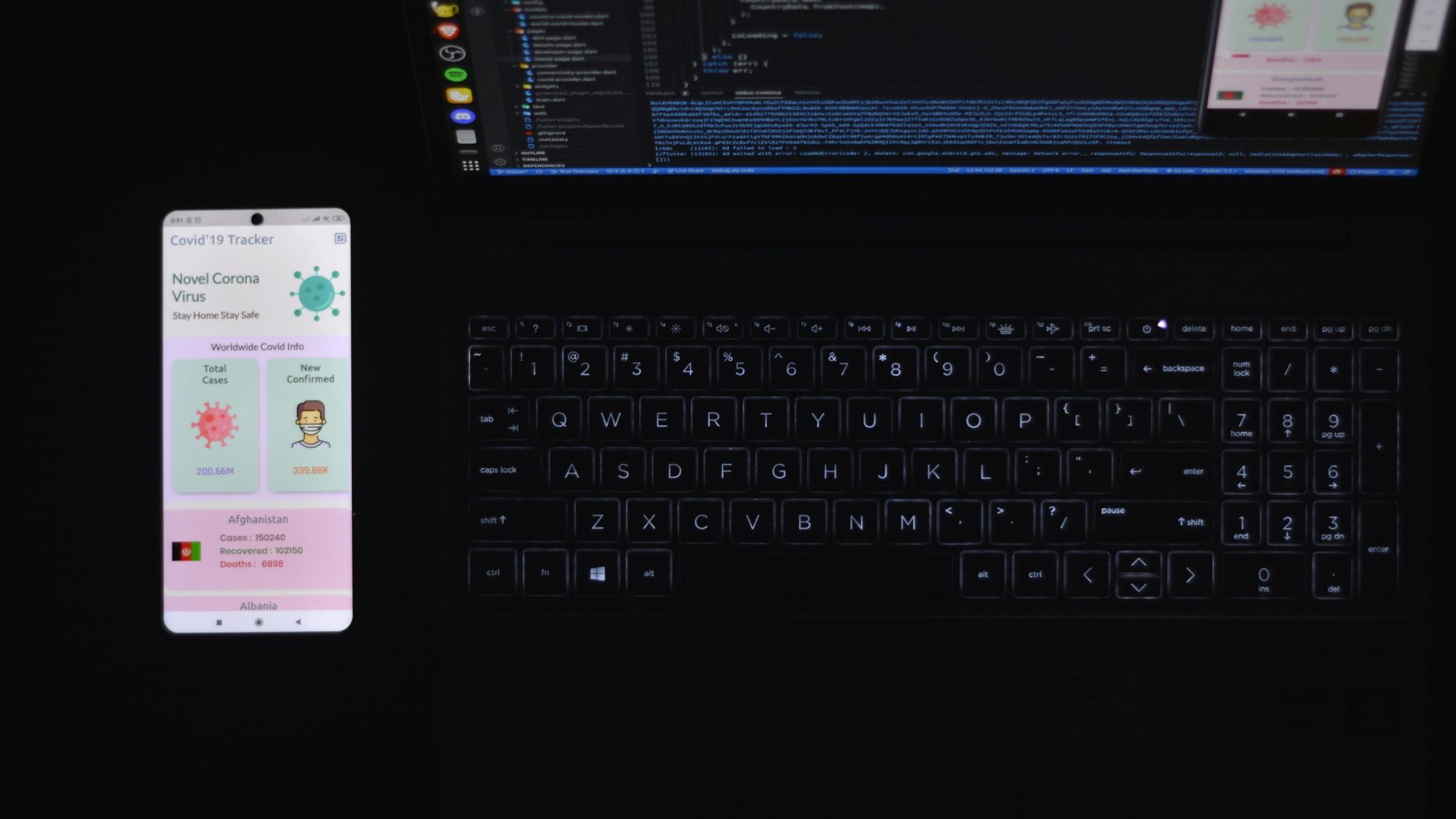
The reasons behind Flutter’s ascent to the forefront of mobile development are manifold, each contributing to its status as the future of the industry. Firstly, its cross-platform compatibility fundamentally alters the development paradigm, enabling developers to write code once and deploy it across multiple platforms seamlessly.
This not only streamlines the development process but also significantly reduces time-to-market, giving businesses a competitive edge in the fast-paced digital market. Furthermore, Flutter’s hot reload feature revolutionizes the iterative development process, allowing developers to instantly see changes made to the code without restarting the app. This real-time feedback loop enhances productivity and fosters rapid iteration, leading to faster innovation cycles.
Additionally, Flutter’s ability to deliver native performance on both Android and iOS platforms ensures that users enjoy a smooth and responsive experience, regardless of the device they are using. This native-like performance, coupled with a rich set of customizable widgets, empowers developers to create visually stunning and highly functional apps that adhere to platform-specific design guidelines. Moreover, Flutter’s utilization of the Dart programming language further enhances developer productivity and code maintainability, thanks to its simplicity and expressive syntax.
The backing of Google adds further credibility to Flutter, ensuring ongoing support, updates, and a vibrant community ecosystem. Finally, Flutter’s commitment to continuous improvement underscores its position as the future of mobile development, promising a platform that evolves with the changing needs of developers and businesses alike. As businesses increasingly prioritize efficiency, flexibility, and speed in mobile app development, Flutter emerges as the definitive solution, poised to shape the future of the industry for years to come.
The rapidly growing community of Flutter enthusiasts, developers, and contributors fosters collaboration, knowledge sharing, and the creation of an extensive library of plugins and resources. This vibrant ecosystem not only provides developers with access to a wealth of tools and solutions but also cultivates an environment of innovation and experimentation.
Developers can leverage the collective expertise of the community to overcome challenges, discover best practices, and stay updated with the latest trends and developments in mobile app development. Furthermore, the open-source nature of Flutter encourages transparency, inclusivity, and community-driven contributions, ensuring that the platform remains adaptable and responsive to the evolving needs of developers and businesses.
As Flutter continues to gain traction and recognition within the mobile development community, its future appears brighter than ever, promising endless possibilities for innovation, growth, and success in the ever-evolving landscape of mobile technology.
Table of Contents
Why Flutter is the Future of Mobile Development
Its allure lies in its ability to bridge the gap between efficiency and versatility. With Flutter, developers are empowered to craft native experiences across multiple platforms using a single codebase, shattering the barriers of traditional development paradigms. This cross-platform compatibility not only streamlines the development process but also significantly reduces time-to-market, enabling businesses to stay agile and competitive in an ever-evolving market.
The cornerstone of Flutter’s appeal rests in its hot reload feature, a real-time code update mechanism that revolutionizes the debugging and iteration process. This seamless integration between code and UI fosters rapid prototyping and iteration, empowering developers to iterate at the speed of thought. Furthermore, Flutter’s commitment to native performance ensures that apps built with the framework deliver a responsive and immersive user experience, regardless of the underlying platform. Its rich set of customizable widgets, coupled with the expressive Dart programming language, empowers developers to unleash their creativity and build visually stunning interfaces that captivate users’ attention.
Backed by Google’s formidable support and a thriving community ecosystem, Flutter stands at the forefront of mobile development innovation, poised to shape the future of app creation. As the industry continues to embrace Flutter’s capabilities, it’s clear that this revolutionary framework is not just a passing trend but a transformative force that will drive the next generation of mobile experiences.
Introduction to Flutter
Flutter has emerged as a revolutionary force in the realm of mobile development, offering developers a powerful toolkit to create stunning, high-performance applications across multiple platforms. Developed by Google, Flutter stands out for its ability to produce natively compiled apps with a single codebase, thereby streamlining the development process and reducing time-to-market. Its versatility extends beyond mobile platforms, enabling developers to target web and desktop environments with the same codebase.
The adoption of Flutter signals a paradigm shift in app development, empowering developers to transcend the limitations of traditional frameworks and embrace a more efficient, agile approach. With its intuitive UI components, robust hot reload feature, and native performance capabilities, Flutter has garnered widespread acclaim within the developer community. As businesses increasingly prioritize cross-platform solutions, Flutter’s emergence as a frontrunner in the mobile development landscape underscores its potential to shape the future of app development.
Cross-Platform Compatibility
Cross-platform compatibility stands as one of the cornerstone features propelling Flutter to the forefront of mobile development. Traditionally, developers faced the arduous task of writing separate codebases for each platform, leading to increased development time, complexity, and maintenance overhead. However, Flutter disrupts this paradigm by offering a unified framework where developers can write code once and deploy it seamlessly across multiple platforms, including Android, iOS, and web.
This revolutionary approach not only streamlines the development process but also enhances efficiency and productivity. With Flutter, developers can leverage a single codebase to reach a broader audience, eliminating the need for platform-specific development teams and reducing costs significantly. Moreover, Flutter’s cross-platform compatibility extends beyond mobile devices, enabling developers to target emerging platforms such as foldable devices and embedded systems with ease.
By embracing Flutter’s cross-platform capabilities, developers can deliver high-quality apps faster, stay ahead of the competition, and adapt to the evolving landscape of modern app development effortlessly.
Hot Reload Feature
The hot reload feature in Flutter stands out as a game-changer in the realm of mobile development. It fundamentally transforms the development process by enabling developers to make changes to their codebase and see the results instantly reflected in the app’s interface, without the need to rebuild or restart the application. This real-time feedback loop significantly accelerates the iteration cycle, allowing developers to iterate rapidly and experiment with different ideas, designs, and functionalities.
It fosters a highly interactive and responsive development environment, where developers can fine-tune their apps on the fly, saving precious time and boosting productivity. Furthermore, hot reload enhances collaboration within development teams, as changes made by one team member can be instantly shared and viewed by others, facilitating seamless teamwork and communication. Ultimately, hot reload empowers developers to deliver high-quality apps faster, with fewer errors and bugs, making it a cornerstone feature of Flutter’s appeal and success in modern mobile development.
Native Performance
Native performance is a pivotal aspect that distinguishes Flutter in the realm of mobile development. Despite being a cross-platform framework, Flutter excels in delivering app experiences that feel inherently native to each platform. This feat is achieved through its high-performance rendering engine, which ensures that applications built with Flutter run seamlessly and responsively, regardless of the platform they are deployed on. By leveraging GPU-accelerated rendering and native platform controls, Flutter apps maintain consistent performance standards across various devices, whether it’s an Android smartphone, an iOS tablet, or even a web browser.
This native performance not only enhances user satisfaction but also instills confidence in developers, knowing that their applications will deliver optimal performance without compromise. Additionally, Flutter’s native performance capabilities contribute significantly to reducing development time and effort, as developers can focus on building features rather than optimizing performance for different platforms.
Overall, Flutter’s commitment to native performance underscores its position as a leading framework for modern mobile app development, offering unparalleled speed, responsiveness, and user experience across platforms.
Single Codebase, Multiple Platforms
One of the most compelling aspects of Flutter is its capability to utilize a single codebase for deploying apps across multiple platforms. This paradigm shift in mobile development drastically simplifies the traditionally cumbersome process of managing separate codebases for Android and iOS apps. With Flutter, developers can write code once and deploy it seamlessly on various platforms, including Android, iOS, and even the web.
This not only streamlines the development process but also significantly reduces overhead, as there’s no need to maintain separate teams or resources for each platform. Additionally, having a single codebase ensures consistency across different versions of the app, as any updates or modifications are applied universally. Moreover, this approach facilitates faster time-to-market, as developers can focus on refining the app’s functionality and user experience instead of dealing with platform-specific nuances.
Overall, the ability to use a single codebase for multiple platforms is a game-changer in mobile development, empowering developers to build high-quality, cross-platform apps efficiently and effectively with Flutter.
Growing Community Support
Growing Community Support plays a pivotal role in solidifying Flutter’s position as the future of mobile development. The burgeoning community of Flutter developers worldwide fosters an environment of collaboration, innovation, and knowledge sharing. As more developers embrace Flutter, the community expands, leading to a wealth of resources, tutorials, and plugins. This support network empowers developers to overcome challenges, exchange ideas, and stay updated with the latest trends and best practices in Flutter development.
Additionally, the community-driven nature of Flutter ensures rapid problem-solving and troubleshooting, as developers can rely on peer support to address issues and optimize their code. Furthermore, the active engagement of community members in contributing to Flutter’s ecosystem enhances the platform’s robustness and versatility. Whether through open-source contributions, participating in forums, or attending meetups and conferences, the Flutter community remains instrumental in driving the platform forward.
Ultimately, this vibrant community support reinforces Flutter’s status as a leading framework for mobile app development, offering developers the tools and resources they need to succeed in today’s competitive market.
Rich Set of Widgets
Flutter’s rich set of widgets stands as a cornerstone in revolutionizing mobile app development. These widgets serve as building blocks for crafting visually stunning and highly interactive user interfaces across various platforms. Flutter’s widget library encompasses an extensive range of customizable components, spanning from basic elements like buttons and text fields to complex layouts and animations.
What sets Flutter apart is its adherence to Material Design guidelines, ensuring consistency and familiarity in app interfaces across Android and iOS devices. Moreover, Flutter’s widgets are not only visually appealing but also highly flexible, allowing developers to create unique and engaging user experiences tailored to their specific needs.
Whether it’s implementing intricate animations, handling complex touch gestures, or seamlessly integrating with device hardware, Flutter’s widgets provide the tools necessary to bring app designs to life with precision and efficiency. This comprehensive suite of widgets empowers developers to unleash their creativity and deliver polished, high-quality apps that resonate with users, making Flutter the ultimate choice for building next-generation mobile experiences.
Dart Programming Language
The Dart programming language serves as the backbone of the Flutter framework, playing a pivotal role in its success and widespread adoption. Dart is a modern, object-oriented language developed by Google, specifically designed to address the challenges of building fast, scalable, and maintainable applications. With its clean syntax, strong type system, and powerful features like async/await for asynchronous programming, Dart empowers developers to write efficient code with ease.
Its Just-in-Time (JIT) compilation enables Flutter’s hot reload feature, allowing developers to see their changes reflected instantly during the development process, thus accelerating iteration cycles and enhancing productivity. Furthermore, Dart’s Ahead-of-Time (AOT) compilation ensures high-performance execution, enabling Flutter apps to deliver native-like experiences across different platforms.
Dart’s versatility extends beyond mobile development, as it can also be used for server-side, web, and desktop applications, making it a versatile and valuable language for developers. As Flutter continues to gain traction in the mobile development landscape, Dart remains a key factor in its success, providing developers with a robust and efficient toolset to bring their app ideas to life.
Google’s Backing
Google’s backing of Flutter is a pivotal factor in its ascent as the future of mobile development. With Google’s substantial resources and commitment to innovation, Flutter benefits from a robust support system and a clear roadmap for future enhancements. Being an open-source project under Google’s umbrella, Flutter receives regular updates, bug fixes, and performance optimizations, ensuring its relevance and competitiveness in the rapidly evolving tech landscape.
Moreover, Google’s stamp of approval instills confidence in developers and businesses alike, signaling Flutter’s credibility and long-term viability as a mobile development solution. Google’s involvement also extends to community engagement, fostering collaboration and knowledge-sharing within the Flutter ecosystem. This synergy between Google and the Flutter community fuels the platform’s growth, accelerates adoption, and solidifies its position as the preferred choice for building high-quality, cross-platform mobile apps.
In essence, Google’s backing not only provides stability and reliability to Flutter but also propels it forward into a future of endless possibilities in mobile development.
Continuous Improvement
Continuous improvement lies at the heart of Flutter’s ethos, driving its evolution as a premier framework for mobile app development. With a steadfast commitment to innovation, Flutter undergoes continuous refinement, introducing new features, performance enhancements, and bug fixes with each iteration. This relentless pursuit of improvement is fueled by Google’s active development efforts and the invaluable feedback from the thriving Flutter community.
By embracing a culture of perpetual enhancement, Flutter ensures that it remains at the forefront of mobile development, equipped to meet the ever-changing demands of the industry. This dedication to progress not only enhances the platform’s functionality and reliability but also instills confidence in developers and businesses alike, fostering a sustainable ecosystem where innovation thrives and possibilities abound.
As Flutter continues to evolve, its capacity to empower developers to create exceptional mobile experiences knows no bounds, solidifying its position as the future of mobile development.
Flutter advantages, Flutter vs other frameworks, Dart language benefits, Flutter UI framework:

Flutter, with its myriad advantages, stands as a beacon of innovation in the realm of mobile app development. Unlike traditional frameworks, Flutter offers a unique blend of features that set it apart. Its cross-platform compatibility enables developers to write code once and deploy it seamlessly across various platforms, eliminating the need for separate codebases. This not only streamlines the development process but also reduces time-to-market significantly.
One of Flutter’s crowning jewels is its hot reload feature, allowing developers to instantly view changes made to the code without restarting the app. This iterative approach enhances productivity and accelerates the development cycle. Moreover, Flutter boasts native performance, thanks to its high-performance rendering engine, ensuring that apps run smoothly and responsively on all supported platforms.
Central to Flutter’s success is its utilization of the Dart programming language. Dart’s simplicity and expressiveness make it an ideal choice for building fast and scalable apps. Its modern features, such as ahead-of-time compilation and just-in-time compilation, enhance developer productivity and app performance.
Additionally, Flutter’s rich set of customizable widgets, adhering to the Material Design guidelines, empowers developers to create stunning user interfaces with ease. This, coupled with Dart’s reactive programming paradigm, enables developers to build responsive and interactive apps that resonate with users.
In comparison to other frameworks, Flutter emerges as a frontrunner due to its comprehensive feature set and unparalleled performance. While some frameworks may excel in specific areas, Flutter’s versatility and flexibility make it a preferred choice for developers seeking to deliver high-quality apps across multiple platforms.
Its growing community support, coupled with Google’s backing, ensures that Flutter remains at the forefront of mobile development innovation. As Flutter continues to evolve, driven by community feedback and continuous improvement, it solidifies its position as the future of mobile development, promising endless possibilities for developers and businesses alike.
FAQs About 10 Reasons Why Flutter is the Future of Mobile Development:
- Is Flutter only for mobile development? Flutter was initially designed for mobile development but has since expanded to support desktop and web platforms as well.
- Can Flutter be used for building complex applications? Yes, Flutter is capable of building complex applications with rich user interfaces and advanced functionalities.
- How easy is it to learn Flutter for developers new to the framework? Flutter has a relatively shallow learning curve, especially for developers familiar with object-oriented programming languages like Java or JavaScript.
- What kind of companies are using Flutter for their apps? Many prominent companies, including Google, Alibaba, and Tencent, use Flutter for their applications.
- Does Flutter have any limitations? While Flutter offers many benefits, it may not be suitable for every project, especially those requiring native functionality not yet supported by Flutter.


